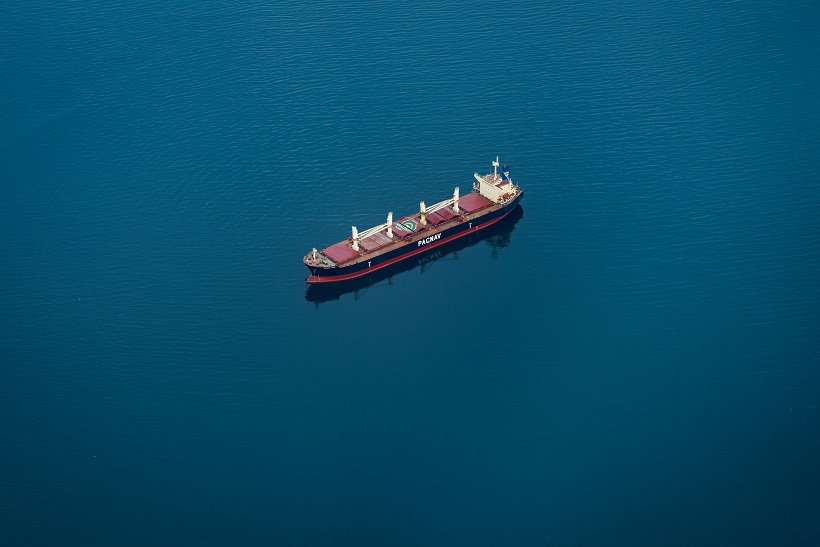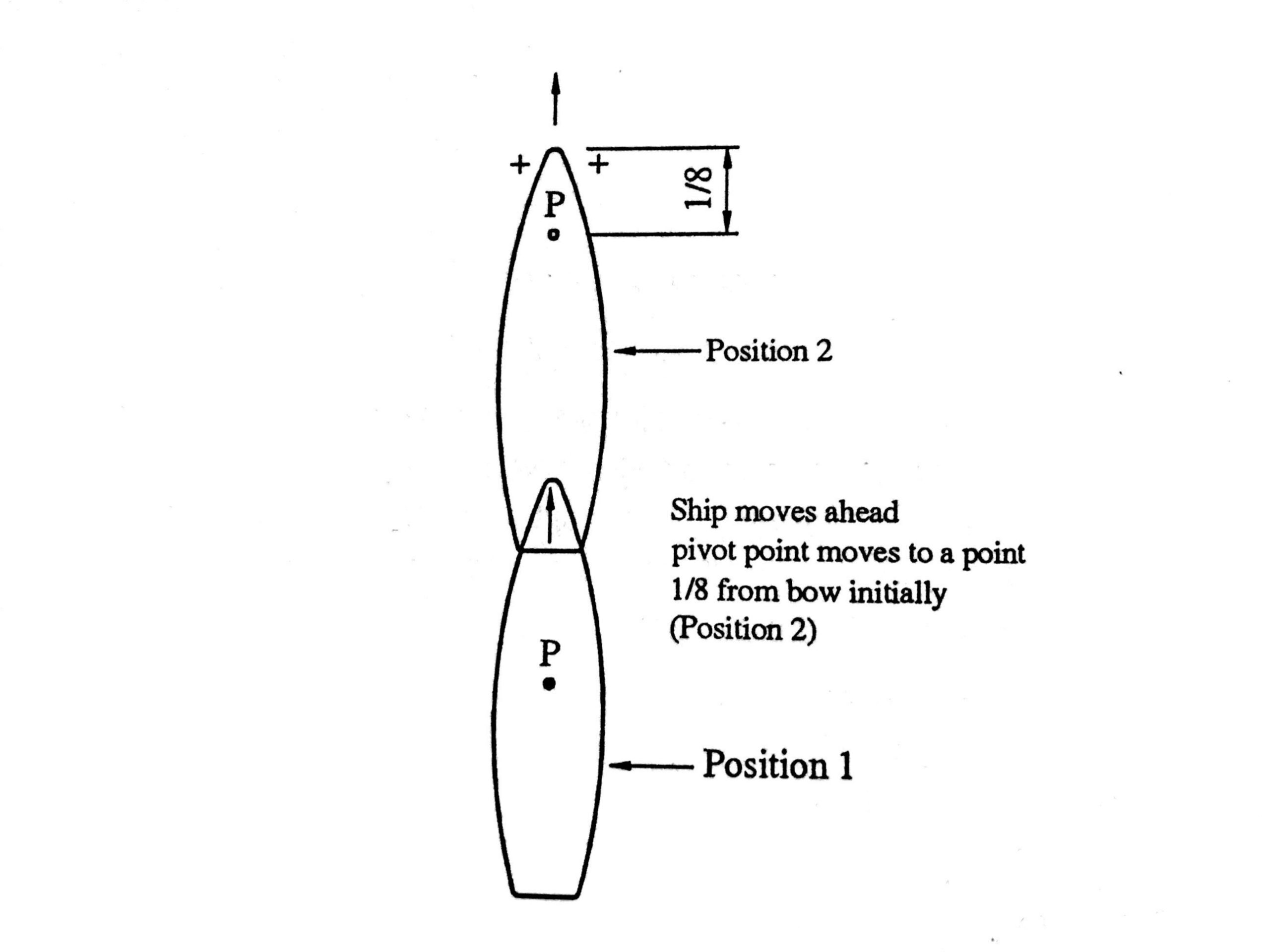Part A – General
Rule-3: General Definitions

(a)The word ‘vessel’ includes every description of water craft, including non-displacement craft, WIG craft and seaplanes, used or capable of being used as a means of transportation on water.
Vessels: All vehicles that operate on the water are vessels, including displacement craft (those that “float” or are supported by the static buoyancy derived from the water that their hulls displace)
Non-displacement crafts: These are supported by the dynamic lift of hydrofoils or other lifting surfaces.
Seaplanes: A seaplane is a powered fixed-wing aircraft capable of taking off and landing (alighting) on water.
“Used or capable of being used as a means of transportation”: This phrase implies the practical transportation of people or cargo. Inner tubes are not included, although sailboards are.
“WIG craft”: A Wig Craft is a multimodal craft which, in its main operational mode, flies by using ground effect above the water or some other surface, without constant contact with such a surface and supported in the air, mainly, by an aerodynamic lift generated on a wing (wings), hull, or their parts, which are intended to utilize the ground effect action.
(b) The term ‘power-driven vessel’ means any vessel propelled by machinery.
Propelled by machinery: Vessels propelled by oars, paddles are not included in this definition. Vessels propelled by machinery as well as any other means of propulsion are considered to be power-driven vessels. A day shape is required for most vessels using both sails and machinery for propulsion; see Rule 25(e).
(c) The term ‘sailing vessel’ means any vessel under sail provided that propelling machinery, if fitted, is not being used.
Propelling Machinery: Operation of the engine to generate electricity or to heat water, does not make the sailing vessel a power-driven vessel, so long as the propeller (or paddle wheel) is not engaged.
(d) The term ‘vessel engaged in fishing’ means any vessel fishing with nets, lines, trawls or other fishing apparatus which restrict manoeuvrability, but does not include a vessel fishing with trolling lines or other fishing apparatus which do not restrict manoeuvrability.
A fishing vessel: This is a vessel used for catching fish, whales, seals, walrus or other living resources of the sea.( (SOLAS I/2)). If a fishing vessel is not engaged in fishing she should display lights and shapes as per Rule-26(e).
Restrict manoeuvrability: Not all fishing gears restrict manoeuvrability. Study Mariner’s Handbook for the details of pictorial fishing gears used by vessels engaged in fishing.
Lines: The term ‘lines’ refers to lines such as long-lines which may be miles long and to which are attached at regular intervals many leaders and hooks.
Trawls: The term ‘trawls’ refers to large open-mouthed nets that are towed through the water by one or two specially equipped fishing vessels (trawlers).
Vessels fishing with trolling lines: (for example, a sport fisherman’s rod and reel with the line towed astern), which do not restrict manoeuvrability.
Other rules: Rule-26 prescribes the lights and shapes and Rule-18 prescribes the privilege and obligations for vessels engaged in fishing
(e) The word ‘seaplane’ includes any aircraft designed to manoeuvre on the water.
When on the water a seaplane is a vessel. Rule 31 gives the navigation light and shape requirements for seaplanes. Non-displacement crafts are not to be considered as seaplanes for the purpose of Rule 18(e).
(f) The term ‘vessel not under command’ means a vessel which through some exceptional circumstance is unable to manoeuvre as required by these Rules and is therefore unable to keep out of the way of another vessel.
Examples:
• Vessel with anchor down but not holding
• Vessel riding on anchor chains
• Vessel with inoperative steering gear
• Sailing vessel becalmed
• Exceptionally bad weather (relative to vessel claiming status)
Rule 18 assigns the privileges and obligations & Rule 27 prescribes the lights and shapes for not-under-command vessels. A NUC vessel is entitled to get privileges only when she displays required lights and shapes.
(g) The term ‘vessel restricted in her ability to manoeuvre’ means a vessel which from the nature of her work is restricted in her ability to manoeuvre as required by these Rules and is therefore unable to keep out of the way of another vessel. The term ‘vessel restricted in her ability to maneuverer’ shall include but not be limited to:
Because of the nature of her work: The status does not apply to vessels that cannot manoeuvre because of external reasons such as – they are in a narrow channel or in shallow water or because of strong currents or bad weather. Vessels restricted in ability to manoeuvre may or may not be underway. These vessels are often called as RAM vessels.
Distinction: The vessels mentioned below (i – vi) must be engaged in their special operations to be entitled to the status as a vessel restricted in her ability to manoeuvre.
(i) a vessel engaged in laying, servicing or picking up a navigation mark, submarine cable or pipeline;
(ii) a vessel engaged in dredging, surveying or underwater operations;
(iii) a vessel engaged in replenishment or transferring persons, provisions or cargo while underway;
(iv) a vessel engaged in the launching or recovery of aircraft;
(v) a vessel engaged in mine clearance operations;
(vi) a vessel engaged in a towing operation such as severely restricts the towing vessel and her tow in their ability to deviate from their course.
Severely restricts: A vessel engaged in a routine towing operation is not normally justified as restricted-in-ability-to-maneuver status. This is emphasized in the definition by the words “severely restricts.”
(h) The term ‘vessel constrained by her draught’ means a power-driven vessel which because of her draught in relation to the available depth and width of navigable water is severely restricted in her ability to deviate from the course she is following.
CBD Vessels: These vessels are specified to be only power-driven vessels. CBD vessels don’t necessarily mean VLCCs, ULCCs, Larger ships, Deep Draft Vessels. Even a small power driven vessel can be entitled to be a CBD vessel when her draft in relation to available depth and width of surrounding navigable waters makes her restricted to deviate from her present course.
Available depth & width of navigable water: The depth of water directly underneath the vessel is not the determining factor; rather, the depth close to either side of the vessel determines the level of constraint.
(i) The word ‘underway’ means that a vessel is not at anchor, or made fast to the shore, or aground.
Underway: Apart from the definition above, a vessel that is “underway” need not be moving through the water.
Making way through the water (used in Rules 26, 27, and 35): If a vessel underway is moving relative to the water, it is making way. For example, if a ship is headed up a river, making five knots through the water, and there is a five-knot current against it, then it is making way through the water even though it is making no progress relative to the shore.
Making no way through the water (used in Rule 35): If a vessel is making no way through the water, it is stopped and drifting. A vessel is drifting down the river is not making way, even though it is moving much faster over the bottom
At Anchor: Usually a vessel is considered at anchor only when she is holding the chain and brought up. A vessel is considered underway when she is dragging her anchor or if she is not yet brought up to anchor she has let go.
(j)The words ‘length’ and ‘breadth’ of a vessel mean her length overall and greatest breadth.
Length: Here in this rule, Length means LOA but not LBP or Waterline Length.
LOA: The maximum length of a vessel ‘s hull measured parallel to the waterline, usually measured on the hull alone, and including overhanging ends that extend beyond the main bow and main stern perpendicular members.
LBP: Measured from the point the stem intersects the design waterline and the centerline of the rudder post
Waterline Length: Measure between points where stem and stern enter the water.
Breadth: The greatest breadth does not always occur amidships.
(k) Vessels shall be deemed to be in sight of one another only when one can be observed visually from the other.
These eight rules do not apply to two vessels not “in sight of one another.” Even though the vessels may know each other’s exact course, speed, and position by means of Automatic Identification System (AIS) or Automated Radar Plotting Aids (ARPA) or other devices, Rules 11 through 18 apply only if visual contact is also made.
(l)The term ‘restricted visibility’ means any condition in which visibility is restricted by fog, mist, falling snow, heavy rainstorms, sandstorms or any other similar causes.
Connections: Rules 19 and 35 apply only to vessels in or near an area of restricted visibility.
Other similar causes: Such as smoke from own vessel, other vessels, or ashore, and dust storms, smog (a kind of air pollution, originally named for the mixture of smoke and fog in the air) etc.
(m) The term ‘wing-in-ground (WIG) craft’ means a multimodal craft which, in its main operational mode, flies in close proximity to the surface by utilizing surface-effect action.
WIG crafts are not to be considered as seaplanes or non-displacement craft. The definition for “Wing-In-Ground” craft was added to address hybrid water/air craft that can operate on the water and just above the water in ground effect — on a cushion of air.



thanks a lot <3
Rule 3.(b) includes the paddle boat as a power driven vessel. But in your explanation it’s mentioned other way which is wrong as per ROR.
How a paddle boat can be power driven vessel!!!. Only vessel propelled by some kind of machinery is designated as power driven vessel